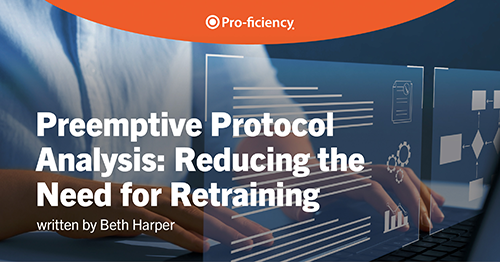Business Expansion in the Digital Age
No business or industry has gone untouched by the widespread impact of COVID-19. Whether it was business development, talent acquisition, or company culture, every organization had to adapt in some way to weather the storm. In fact, many organizations were still reeling from the effects of the omicron variant just a few months ago in early 2022.
But now, as we look back on the past three years from the post-COVID era, there are many lessons to be learned and many opportunities to take advantage of as businesses seek to recover, grow, and thrive moving into the future.
Our industry and the industries we serve, for example, have faced several challenges over the past few years. From a business development perspective, there was a sudden reduction in trade shows and in-person events a few years ago, impacting our ability to make connections with customers and forcing our sales team to adapt virtually. On a larger scale, the life sciences industry as a whole is struggling with talent deficiencies and increasing costs, all of which impact outside partners like Pro-ficiency. Studies are harder to staff, sponsors are struggling with manpower, and business expenses are going up tremendously.
When we think about the strategies and tools businesses can use to make the most of this unique environment, a few things come to mind…
Focus on Customer Satisfaction and Innovation
Focusing on customer satisfaction and bringing innovative offerings to the table can mitigate gaps caused by a dip in new customer acquisition. In a world where business expenses are skyrocketing, sponsors/CROs are more than ever on the lookout for cost-cutting strategies. And at Pro-ficiency, we strive to provide such a valuable experience to customers that they always come back to us for their next study.
To ensure our customers’ satisfaction, we invest heavily in our technology and our team to provide customers with tools that provide undeniable value to their business. Most recently, we expanded our sales team, acquired a product development team for updating and creating new products more rapidly, and launched the use of avatars to help improve throughput and capacity for building simulations. We also have a whole series of product initiatives in the works to facilitate payments, improve analytics, and allow study participants to more easily connect – all expected to roll out in 2023.
By investing in the right priorities, we are able to deliver for our customers and make future acquisitions easier.
Embrace Virtual
Pro-ficiency has always been a lean and virtual organization, so we were well-positioned to tackle the pandemic from day one, needing to make much fewer adjustments than other larger businesses that operated primarily in person. Now that we are on the other side of the pandemic, it’s obvious that virtual is the way forward. For the sake of business development and company culture, embracing this reality has proven to be better at reducing costs, maintaining employee satisfaction, and delivering results than even the old pre-covid way of conducting business.
With the right tools and structure, employees can be much more efficient, product development can be streamlined, and building your team from a much larger pool of candidates can offer unlimited opportunities.
Invest in Company Culture
Building a meaningful company culture where a team can thrive is more important than ever as employees have unlimited options at their fingertips. Making this a top priority will pay off tenfold down the road as companies look to expand and grow.
At Pro-ficiency, we’ve been very fortunate to attract top-shelf talent. A lot of that is because people want to be involved in what we do. Being part of the solution to accelerate therapeutics for a rare disease is very noble work, it’s meaningful. We also work to create a positive day-to-day environment for our team by connecting personally with virtual tools, sending regular updates on company progress, and getting together in person whenever possible. All of these efforts go towards creating a culture that will allow Pro-ficiency to grow in this new world.
Overall, businesses that adapt to the new digital landscape and prioritize customer satisfaction, innovation, and company culture will be well-positioned to thrive in the post-COVID era.
Visit our website to learn more about Pro-ficiency: https://www.pro-ficiency.com/about/

Michael Raymer, CEO of Pro-ficiency, is an adept leader, critical strategist and ambitious executive who is here to drive Pro-ficiency’s strategic objectives and fuel growth. With his extensive experience in startups, turnarounds and Fortune 100 companies, Michael naturally cultivates world-class management teams, resulting in smarter, faster, and more effective organizations. While Michael currently hails from Colorado, a piece of his heart will always be in Kansas with his alma mater, the University of Kansas Jayhawks.


